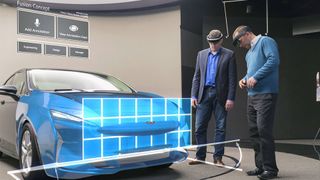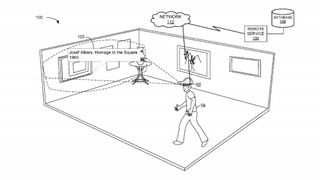HoloLens 2 could have wider field of view according to yet another patent
Improved FOV would be a real crowd pleaser, that’s for sure

A couple of fresh patents have been unearthed which detail technology that could potentially be used in a future iteration of HoloLens – perhaps even the sequel which is due to be revealed at MWC 2019 – with the most interesting one again hinting that Microsoft intends to improve performance in terms of field of view.
That would be an obvious improvement to make, as the narrow field of view is one of the most common criticisms levelled at the current HoloLens. And indeed we heard last June that Microsoft was looking into ways to improve it using a MEMS laser scanner.
This new patent, published yesterday and spotted by Windows Latest, adds further fuel to the fire that this is an area Microsoft is seeking to better with its headset.
- HoloLens 2 is expected to be much cheaper
- What is augmented reality anyway?
- We’ve chosen the best VR headsets of 2019
The patent specifically talks about revamping the waveguide display device – in other words, the holographic lenses – to widen the field of view, while avoiding the potential danger of making the hardware bulkier.
The field of view can be made wider by employing “layered switchable Bragg gratings to create spatially separated diffraction elements that have a combined field of view that is greater than a field of view of a single diffraction element”, the patent observes.

The drawback, however, is that (obviously enough) creating the space for this separation means a thicker waveguide, and thus a potentially bulkier headset. Luminance non-uniformity issues – distractingly varying light levels – may also be gremlins in the works when it comes to looking at approaches for increasing field of view in this manner.
At any rate, Microsoft’s patent proposes a solution to provide “a near-eye display device with a wide field of view through the use of angularly multiplexed holographic recordings to form gratings for the waveguide”.
Get daily insight, inspiration and deals in your inbox
Get the hottest deals available in your inbox plus news, reviews, opinion, analysis and more from the TechRadar team.
The idea is that those angularly multiplexed holographic recordings (good job that isn’t a mouthful) can be spatially overlapped, thus minimizing any increase in size compared to using layers of gratings.
The net result should be a headset with an impressively wider field of view, that isn’t bulked-up to the extent that it detracts from the comfort of wearing a mixed reality device for longer periods of time.
The eyes have it
The second patent discovered relates to eye-tracking in head-mounted displays, and pertains to technology that facilitates a “streamlined and efficient design” for use in such hardware, avoiding common pitfalls.
Those pitfalls of conventional eye-tracking systems mentioned include adding unnecessary bulk and weight, not to mention additional cost for the end hardware. Stray light from the light source of the eye-tracking system is also cited as a problematic bugbear.
Of course, enhancements on any or all of those fronts are more than welcome, particularly when it comes to affordability – which can certainly be an issue in terms of higher-end VR or mixed reality headsets.
Just as with any big tech company, Microsoft files these sort of patents routinely and sometimes speculatively, so there’s no guarantee that any of the aforementioned technology will ever actually be used in a finished headset.
- We’ve got all the answers to your questions on Windows Mixed Reality
Darren is a freelancer writing news and features for TechRadar (and occasionally T3) across a broad range of computing topics including CPUs, GPUs, various other hardware, VPNs, antivirus and more. He has written about tech for the best part of three decades, and writes books in his spare time (his debut novel - 'I Know What You Did Last Supper' - was published by Hachette UK in 2013).
